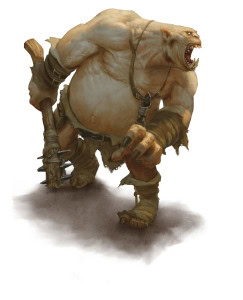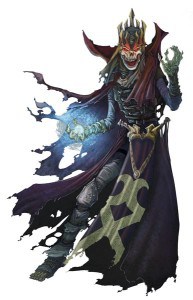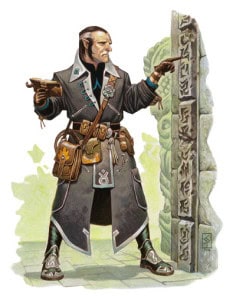Hook, line, and sinker adventures were a concept that was heavily promoted in Palladium years ago but has also been introduced in other games as well. The process goes like this. To design the framework of an adventure, you only need the three elements.
Hook: This is what draws the party into the adventure.
Line: This is what the party has to do in the adventure.
Sinker: This is the twist, or possible complication, to the adventure.
And that’s it. That is the whole adventure. It sounds really simple and that is the beauty of it because it is. With this general outline, a gamemaster can brainstorm dozens, if not hundreds, of different adventure ideas for their campaign.
When I was a teenager running the Palladium Fantasy Roleplaying Game, I would brainstorm dozens of adventure ideas using this method. My only roleplaying “claim to fame” actually came while using this process.
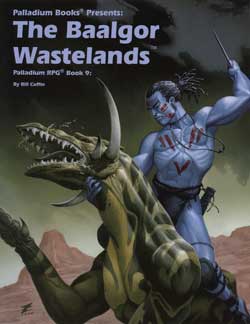 Many moons ago I was brainstorming different adventure ideas for my Palladium FRPG campaign. I happened to post a few of them on my Palladium FRPG fan website that I ran back in the day, before creating websites was as easy as it is now. I posted a simple hook, line, and sinker adventure titled “Gorum’s Bridge” that caught the attention of Palladium writer, Bill Coffin. Bill loved the basic premise of the adventure and asked if he could use it in his upcoming sourcebook, PFRPG Book 9: The Baalgor Wastelands. Like any young fanboy, I agreed immediately.
Many moons ago I was brainstorming different adventure ideas for my Palladium FRPG campaign. I happened to post a few of them on my Palladium FRPG fan website that I ran back in the day, before creating websites was as easy as it is now. I posted a simple hook, line, and sinker adventure titled “Gorum’s Bridge” that caught the attention of Palladium writer, Bill Coffin. Bill loved the basic premise of the adventure and asked if he could use it in his upcoming sourcebook, PFRPG Book 9: The Baalgor Wastelands. Like any young fanboy, I agreed immediately.
What Bill did with my simple concept for the adventure is a perfect example of what any gamemaster can do with a hook, line, and sinker adventure. He took a simple idea and made it better. Here is how the process worked from start to finish.
I created a simple hook, line, and sinker adventure that goes something like this:
Gorum’s Bridge – Adventure
Hook: The party is traveling along the road and comes upon a large bridge that they must use to cross a large ravine.
Line: As they approach the bridge, a large troll appears out of seemingly nowhere on the bridge and demands they answer his riddle in order to cross the bridge.
Sinker: The troll doesn’t actually care if the party answers his riddle at all. He’s a bandit and he’s just stalling the group while his cadre flank and surprise attack the player characters.
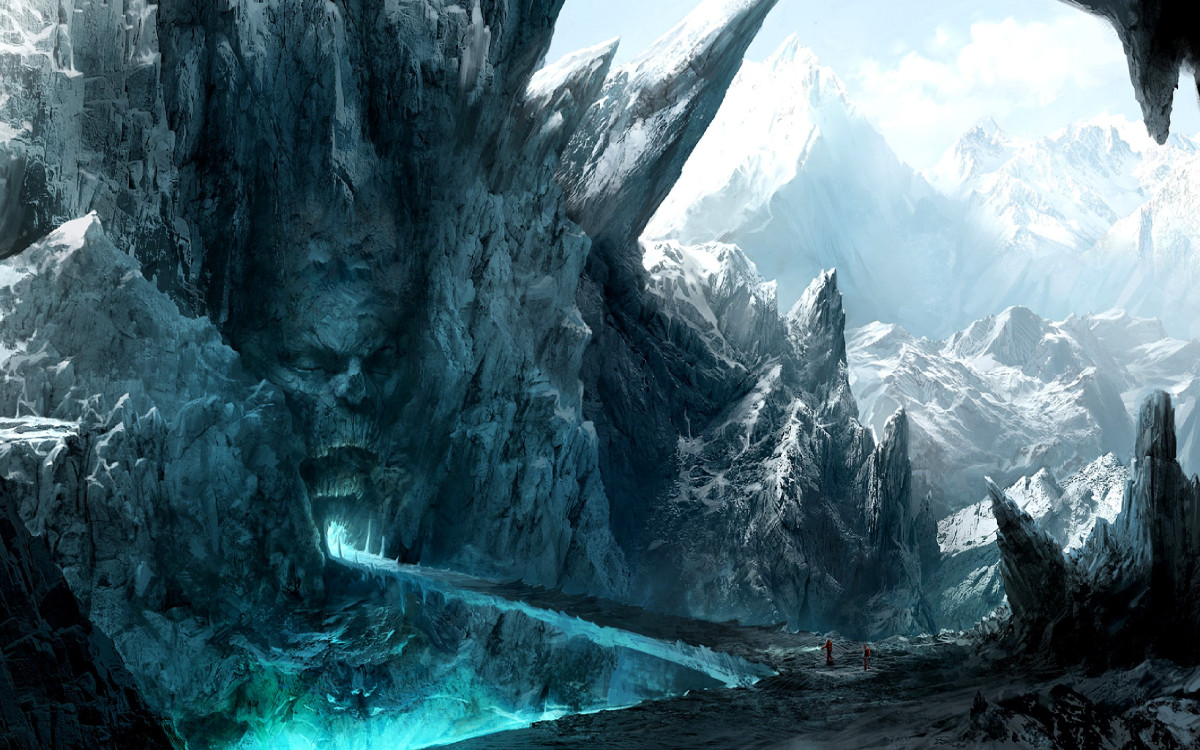 That is it. That is the whole adventure. I think my original draft added a little bit of additional flavor, like the troll pretended to be a wizard but in reality he just had a very weak cloak of invisibility item he was wearing. I think I also scoured the internet and found a simple riddle I could ask the players.
That is it. That is the whole adventure. I think my original draft added a little bit of additional flavor, like the troll pretended to be a wizard but in reality he just had a very weak cloak of invisibility item he was wearing. I think I also scoured the internet and found a simple riddle I could ask the players.
But that was it. That was the entire adventure. And that’s all any good hook, line, and sinker adventure needs is that little nugget idea that you can use to develop the rest of your adventure around.
When Bill Coffin asked to use my idea in his sourcebook, he asked for permission to modify it slightly to seamlessly fit it into the sourcebook. When he did, he took that very simple idea and fleshed it out to make the simple concept even bigger. I believe the final adventure was approximately two pages or so in the sourcebook. It included area specific information that fit it into the Baalgor Wastelands sourcebook and statistics for various creatures and items but not a whole lot else.
The core of the adventure, though, remained the same. And that is the hallmark of any good hook, line, and sinker adventure.
If you haven’t tried this method for brainstorming adventure ideas, go ahead and give it a try. It can take a little while in the beginning to get used to. In no time at all though, you can develop a very large list of adventure ideas that can become your seeds to a great campaign.
]]>This got me thinking about unique environmental challenges in a roleplaying setting. Not your ordinary snow, rain, wind, or other commonplace elements. We’re talking about unique, once in a character’s lifetime, types of occurrences. Although I had a fantasy setting in mind with many of these they can be easily bent to occur in other settings as well, such as sci-fi, modern fantasy, or any other setting where magic, science and the unknown can come together.
Here are five environmental challenge ideas for your gaming session:
1 – Mana Storm
Summary: A storm of a magical variety, the mana storm should be unpredictable and utterly terrifying in how that unpredictability affects those in its reach. If you want to add something to an adventure that just flat out causes problems and defies logic, add a mana storm.
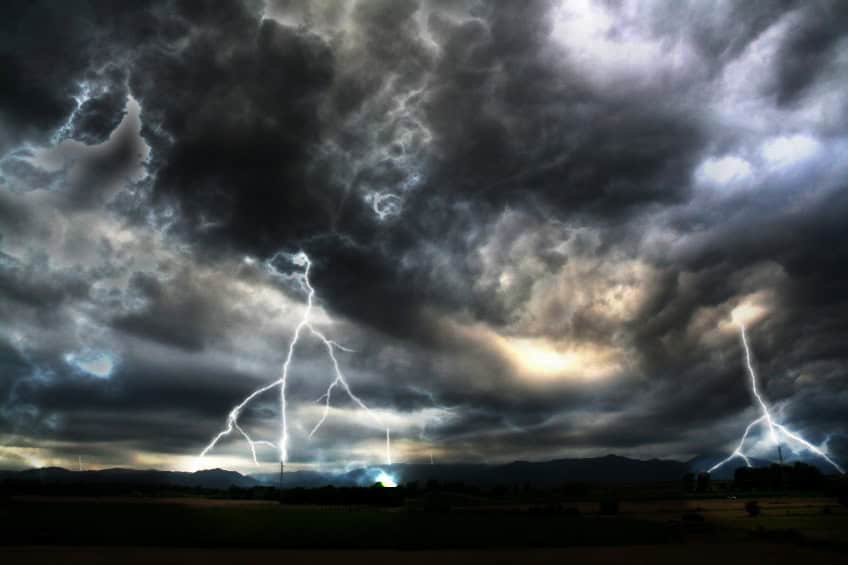 A mana storm can take the form of whatever is appropriate for your campaign. It may be electrical impulses shooting through the air causing static discharge on metal and the hair of players and animals to stand on end. The ambient energy disrupts magic of any type, causing spells to have unintended consequences or changing the power level of the spell like amplifying or diminishing its power.
A mana storm can take the form of whatever is appropriate for your campaign. It may be electrical impulses shooting through the air causing static discharge on metal and the hair of players and animals to stand on end. The ambient energy disrupts magic of any type, causing spells to have unintended consequences or changing the power level of the spell like amplifying or diminishing its power.
The physical elements most likely akin to a true storm of nature. The wind is howling, rain or snow is blowing nearly sideways, animals run for cover as thunder and lightning go off in the air.
There may be things in your campaign that must occur during this type of incident. Maybe druids can only cast a specific healing ritual when this type of storm occurs. An evil cult may use this type of event as a catalyst to raise a large amount of undead all at once. Locals may see this as a sign that the gods are displeased and a major sacrifice must be made.
A mana storm should be added into the campaign when things need to get shook up a little bit. It could be a foreboding sign of something that is to come. Individuals trapped within the storm should be wondering when this will end? What caused this? Is there anything they can do besides weather it out? And, will it come again?
2 – The Boil
Summary: While traveling through a swamp, marsh, or other area with a low-level of water or other liquid type, the ground begins to heat up. Pockets of hot gasses sprout up from the earth. Anyone near one of these pockets when it opens is likely to be temporarily blinded or burned. This may be a geological occurrence, magical occurrence, or have some other explanation.
The water or other liquids start to heat up with certain pockets even reaching a boiling point. The air becomes thick with vapor and gasses causing breathing to become more difficult. Airborne animals take refuge in the sky while ground animals begin to sprint away from discomfort and towards any area that will cool them down. Any water-based creatures, such as fish or amphibians will panic in an attempt for survival. Amphibians begin fleeing from any pools of liquid while some fish can even be seen jumping out of the water onto dry land, only to eventually die.
The boil should cause one of two things to happen. Anyone traveling through it will either try to exit that area (swamp, marsh, etc.) as soon as possible or they will seek refuge in a safe place (an unaffected cave, high ground, climbing up tall trees, etc.). This could be one way to force a group of adventurers towards a specific physical location that you want them to go. It could also be an occurrence that has some other relevance to your campaign (the dying of the earth, a spirit awakening from below, etc.).
3 – The Plague (Disease)
Summary: The plague could take many forms but a plague short in duration could have a more episode driven effect and may be less costly to a campaign that a long and drawn out plague. Perhaps a fast acting but short duration sickness that sweeps through a village or countryside. It is a tool that can be used to cause upheaval and change the balance of an area.
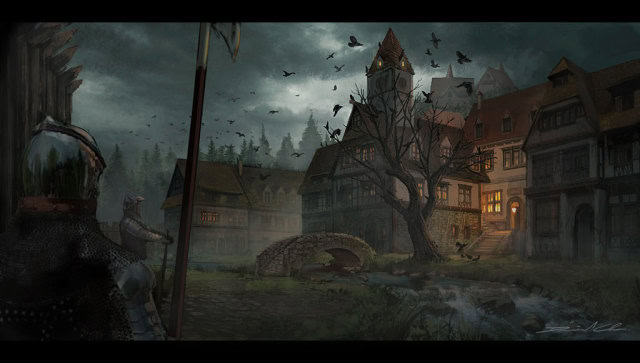 This plague could be caused by direct contact, spreading through the air, unsanitary conditions, undercooked food, or even something that was artificially introduced into the environment. Its fast onset is realized through signs and symptoms such as fever, chills, fatigue, headaches or muscle aches, swollen glands, abdominal pain, diarrhea, vomiting, bleeding from the mouth, nose or rectum, shock, or even blackened necrotic skin.
This plague could be caused by direct contact, spreading through the air, unsanitary conditions, undercooked food, or even something that was artificially introduced into the environment. Its fast onset is realized through signs and symptoms such as fever, chills, fatigue, headaches or muscle aches, swollen glands, abdominal pain, diarrhea, vomiting, bleeding from the mouth, nose or rectum, shock, or even blackened necrotic skin.
As it passes through, it causes turmoil within the local population and opens up areas of vulnerability, or opportunity, that there may not have been otherwise. Doctors are now unavailable, less guards are posted at less important areas, commonplaces like taverns and inns may have shut down temporarily, prices for certain goods are now soaring, some people have even packed up and left the area entirely fearing that they will be next. People who may have been hospitable before are now very unaccommodating for fear of catching the disease.
The specifics of the plague are up to you. It may simply incapacitate those it affects until they recover to full health or it may be fatal. It may come and go in a mere 24-48 hours or last a week or longer. There may be some in the population that are unaffected, like specific groups or races of individuals, or it may strike any and all that come in contact with it.
This can be used as a tool to cause major disorder in an area and shake things up. If the town that everyone is used to hanging out at has become monotonous or stale you can shake things up. Kill off some individuals that have become stale in the campaign and introduce new ones. Change the power dynamics of the region by causing instability with different businesses due to the disease. Cause suspicion and distrust by masking how the disease was introduced in the first place and who was responsible for it.
4 – The Plague (Insect)
Summary: This type of plague, as opposed to the plague of disease, has the ability to bring an area together instead of apart. When introducing a plague of insects, this will bring a town or area together under the common goal of attempting to eradicate this one specific nuisance. It can be a distraction that causes everyone in an area to lose focus, even if just momentarily, on what is happening in their area to focus on removing this one pest that has entered their life.
There are many insects or small animals that come to mind for plagues. Locusts, crickets, termites, cockroaches, fire ants, killer bees, yellow jackets, beetles, bedbugs, stinkbugs, moths, or some creature that is native only to your setting.
Each will bring something different to the table depending on what you are attempting to accomplish. Locusts destroy crops, crickets keep people awake, termites destroy building and lumber supplies, cockroaches can spread disease, fire ants, killer bees, and yellow jackets can all physically injure or kill people, and so on. The insect you introduce should be the vehicle for the problem that you want to introduce into the scenario or campaign.
The cause of the insect plague can also be a foreboding sign of things to come for your storyline. Is this plague a natural occurrence that happens on at a specific time period, like once a decade? Is it a harbinger of things to come such as a weak harvest year, bad weather, or earthquakes? Or is it unnatural, the cause of which players will have to investigate to discover why it happened?
5 – The Rending
Summary: Similar to an earthquake, the rending can be an event that has a more permanent impact in your game. The rending is a tear in the that causes an area to be torn asunder. Think of a mini ‘Grand Canyon’ occurring but instead of it taking place over the course of hundreds or thousands of years, it happens in a few minutes or hours.
 When the rending takes place, the earth begins to shake and has the initial appearance of a strong earthquake. However, it is clear that after a few minutes it isn’t going away quickly as the ground is torn apart and the fissure in the earth begins to open. Weak buildings are destroyed, roads are torn apart, bridges collapse, fires occur in heavily wooded areas, and if it occurs close to a coastal area a tsunami may ensue.
When the rending takes place, the earth begins to shake and has the initial appearance of a strong earthquake. However, it is clear that after a few minutes it isn’t going away quickly as the ground is torn apart and the fissure in the earth begins to open. Weak buildings are destroyed, roads are torn apart, bridges collapse, fires occur in heavily wooded areas, and if it occurs close to a coastal area a tsunami may ensue.
If this event occurs in a less populated area, it may add a new obstacle for travelers to have to deal with. It may block a major trade route which encourages merchant guilds to build a bridge or find some other way around the obstacle. Perhaps it introduced a new barrier between two warring factions, allowing one faction to get the upper hand in the war against the other. It may have also destroyed a major monument of cultural importance or allowed for the discovery of a lost treasure buried centuries ago, making it a new mecca for a certain portion of the populace.
The Rending can be introduced into a gaming session when you want to cause a permanent geological and geographical change to an area. It will wreak havoc on any local population in the area completely disrupting life for local population. Over time, it may even turn a once thriving area into an abandoned ghost town.
One final note, in addition to the ideas provided above I found some additional environmental challenges over at the ever-helpful Roleplaying Tips that may be of interest to you as well. Here is a link to 12 Disasters In Fantasy Campaigns by Jim Davenport, Dragonlaird Gaming (Roleplaying Tips). The article contains more “natural” disasters that one can incorporate into a game session or campaign.
]]>Dungeon World monsters and NPC’s don’t really have a lot of mechanical stats you need to worry about. A handful of hit points and a damage die pretty much covers the mechanics you need for your enemy. Sometimes I roll a few d6’s to quickly generate enemy hit points, or just pick whatever feels right. Although truth be told I usually just track a creature’s hit points until they seem to have taken “enough” damage to kill them. As for damage I simply pick a die type (d4, d6, d8, d10, or d12) and add +0 to +5 depending on the creature. Finally I decide if the foe has some sort of armor rating usually ranging from 1 – 5. That usually does it for stats. Of course stats don’t really make an enemy interesting or exciting.
In order to make a monster or enemy more exciting I look at it differently. When I need a monster quickly I picture the creature in my mind’s eye. I think about what the creature looks like and more importantly, what it looks like in action. The second part, what it looks like in action, is the really important part when it comes to making an exciting combat.
When I picture an enemy combatant I’m thinking about a bunch of different elements. I’m picturing what they look like and how they are dressed and armed, and I’m also picturing how they move, fight, and defend themselves. I focus on a few important elements that impact a combatant’s feel:
- How do they move? Are they graceful, fast, and fluid or heavy, ponderous, and powerful? Do they simply wade into battle or dart in and out of the melee? Do they tend to walk, run, fly, slither, or even leap into the fray?
- What “attribute” do they fight with? Do they really on their strength and power? Raw physical size and mass? Speed, agility and reflexes? Are they cunning and sneaky? Is their mind their greatest asset?
- How are they armed? Do they use brutal, powerful crushing weapons? Light, fast slashing weapons? Nasty teeth and claws? Powerful arcane blasts? Telepathic manipulation? Can they manipulate their enemies in battle?
- What tactics do they employ? Are they simply forces of raw, mindless destruction? Do they take advantage of their environment? Do they order minions into the battle? Do they choose their targets carefully and strategically?
The important thing here is that I’m not thinking of anything mechanical but instead looking at them with my cinematographer’s hat on. I’m paying attention to how all of these elements look and feel because that’s how I’m going to utilize them and describe them. Even more importantly it’s going to inform a lot of my choices on things that might happen on a 7-9 result or a 6- result. With that said, let’s take a look at a couple of examples of how I employ these techniques.
The Hulking Ogre
In my mind I’m seeing a massive creature of rippling muscle and sinew. He’s not agile, he stomps around the battlefield shaking the ground and breaking and crushing the things around him. He attacks brutally and without finesse, looking to literally crush the life from his foes. He’s fueled by rage and instinct and doesn’t really make plans or think through his actions. He’s virtually unfazed by pain but his dull mind fears mysterious forces like arcane magic.
So far this gives me a lot to work with not only from a narrative perspective but from a mechanical one as well. His long powerful arms and ground-shaking stomp might demand some Defy Danger rolls. The consequences of a Hack-and-Slash might range from being grabbed and tossed aside like a rag doll to being knocked to the ground and pinned under his foot. He is not only capable of hit point damage but this guy breaks bones, delivers concussions, and knocks the wind out of heroes. He grabs, kicks, and throws things which may also force Defy Danger rolls on the entire party as well as leaving behind a trail of destruction. Even unintentionally his size and raw power can uproot trees, flip over wagons, and knock down columns creating all sorts of obstacles for the heroes to deal with, trip over, or be damaged by.
I’ve also got some good ideas on how he might react to some of the heroes’ actions. Intimidation may only serve to enrage him, but that might be a very exploitable, blind rage. Flashy, mysterious arcane effects might cause him to hesitate or become momentarily confused. Quick and agile heroes may be able to take advantage of his slow and somewhat clumsy movement. He also will probably fall for tricks and clever tactics that heroes might come up with. Dealing damage to him will probably cause him to turn on his attacker and lash out. Looking at my ogre this way I’m ready to run a great encounter with him, one the players should remember for a while.
The Unliving Lich
Her slight, undead body seems fragile but her physical durability and toughness is substantial. Her mind and mastery of necromancy are her primary weapons. She utilizes many magical effects both offensive and defensive; all of which are tainted by necromantic energy. She commands the battlefield often hovering above it, held aloft by her arcane power. She surrounds herself with undead thralls as well as the risen dead that she animates through her own force of will. Her arrogance and immortal nature tends to cause her to underestimate opponents and to think of herself as completely invulnerable to “mere” mortals.
Once again I’ve got a great idea how this creature will fight the heroes. Defy Danger will happen constantly, whether from one of her horrible rotting spells or from the shield of necromantic energy she surrounds herself with. Anyone “lucky” enough to get in melee combat with her runs the risk of being exposed to a withering touch should they roll poorly on a Hack-and-Slash. Even those that Volley from afar may discover themselves in a bad situation when undead corpses burst up all around them. In addition she’s no fool and never fights alone, her ghoul retinue is fast and savage and protects their queen to the death. With a simple command she can also raise additional skeletons and zombies from the crypts throughout her chambers.
The heroes may be in a little trouble here but there are still things that could help them defeat her. Her sense of invulnerability and arrogant attitude might be exploited by cunning heroes. The cleric or paladin may be able to use their powers to take advantage of her undead nature. Unfortunately for the heroes, even if she’s “defeated” she is a lich and they may have to contend with her in the future.
Final Thoughts
These examples illustrate my take on monster design in Dungeon World. I love this system in large part because I don’t have to waste time making stats for creatures or having to design encounters utilizing a bunch of math and mechanics. Dungeon World is all about the narrative and you should always focus on the narrative when prepping your adventures.
]]>
The Dungeon World Mystery
I once “anciently” ran a murder mystery with DW that worked out extremely well. The heroes had come to a new town between adventures and were inquiring about goods, services, and the usual stuff characters look into while in town. I filled in some blanks and mentioned several events that had happened recently to give the town a feel and some flavor. These events were simply ones I made up on the spot. One of the events I mentioned was the apparent suicide of a town elder a few days prior to the heroes arrival.
The players instantly were interested in the suicide and figured it must have been foul play. They went to the other town elders and the captain of the guard and began an investigation of their own (totally not what I had in mind for the session!). I like to let the campaign go where the players take it so I embraced my “wing-it” philosophy and let the Dungeon World paradigm do the work. If the heroes want to investigate the death then I guess this apparent suicide just got a lot more interesting.
The heroes began their investigation and I started throwing out interesting tidbits and details and let them trigger Discern Realities and Spout Lore moves. The players began taking notes, asking questions, and making speculations. They began putting together “clues” while I listened to them and added bits and pieces of information that seemed to make sense based on their various dice rolls and my effort to keep things interesting and exciting. Bear in mind that at this point I had no idea who committed the murder, how they committed it, or why it was committed in the first place!
However, as the night went on the players crafted an incredibly intricate and exciting murder mystery. Of course to the five of them, they simply thought that they had unraveled MY intricate and exciting murder mystery! Ultimately their speculations and table-talk put me in the position of figuring out their mystery, not the other way around. I would just make slight adjustments to their lines of reasoning to keep them thinking by saying things like, “The wounds could be from a small blade sure, but several animals have similar claw patterns.” or even something like, “Don’t forget, you guys determined that both the courtesan and the town crier were unaccounted for that evening.” This made the players continually look to confirm one of their lines of reasoning.
So, as the adventure progressed anything the players determined was a clue, I would provide a follow-up piece of information that either confirmed their clue as a fact, or allowed them to disregard their clue. Then I would simply jot down a note for anything that was determined to be a fact. As we went along all I needed to do was make sure that the facts all made sense together, if something didn’t add up I would again provide new information that would either cause them to disregard the clue or bring a formerly disregarded clue back into play as a fact. This way I never needed to try to get the players to solve my mystery or figure out my clues. I just needed to make sure that each fact could potentially work with the other facts and let the players figure out how.
By the end of the night the players had solved (actually they created) the mystery and detailed an amazing plot-arc that ended up becoming the focus of the next several gaming sessions. The great thing was they never realized they were the ones building the mystery and not me. Their creativity and curiosity crafted a much more intricate and exciting story than I could have ever scripted. As the gamemaster the session was an incredible experience. I never needed to figure out how to get the players “on track” or help them understand the nature of a “clue.” Instead I got to sit back and throw out all sorts of details and descriptions. More importantly I got to play to find out what happens, and no one was more surprised by who did it then I was. But that’s a story for another time…
]]>I’ve had several GM’s tell me that they feel more comfortable with detailed notes and a solid adventure outline. Sometimes they aren’t confident in their improve skills and other times they’re just used to their preferred methods and techniques. Since I began playing Dungeon World however, I’ve found that adventure outlines, scripted stores, and other prep tends to get in the way of the interesting way in which the game unfolds organically. I’ll share with you several of my discoveries that have convinced me to throw out the prep work and the designed adventures and simply embrace the “play to find out” concept in my games.
Reasons to forget the script:
It tends to limit your options. One of the things I’ve noticed is that the more information a GM includes in their adventure outline/script the more they need to keep players “on track” with their preconceived notion of how the adventure needs to proceed. Focusing on the destination oftentimes blinds a GM to the many interesting options and opportunities that present themselves on the journey.
On the fly stats are easy. There really isn’t a big need to “stat-out” monsters and NPC’s in Dungeon World. The only thing you really need is to have an idea of the damage they might inflict and maybe how tough they are. Damage isn’t too hard to figure out (pick a die type and maybe add a +1 or so). I only choose to inflict HP damage maybe 50% of the time. Usually my monster attacks do other things or I just tell the player to take “x” hit points damage. Heck, I don’t really worry about monster hit points either, when it seems like they’ve taken enough they go down. My rule of thumb is that a minion type creature goes down with a single decent hit, a lesser creature takes one really good hit or a couple mediocre hits, and so on. For me the only real “stat” I need is an understanding of how the creature works fictionally. Is it big and tough? Fast and agile? Just picture what it does and how it looks when fighting.
 Players can do the work for you. Some of “my” best plot-lines and adventures emerged from listening to the players and building on their creativity. Although I frequently ask players questions about the world their characters are in some of my players don’t feel like they can creatively contribute. So more often than not I just simply listen to their table talk and answer their questions, building on the things they say, the things they assume, and their speculation. Not only does this cut down on my work but it also gains me a considerable amount of player buy-in for the adventure!
Players can do the work for you. Some of “my” best plot-lines and adventures emerged from listening to the players and building on their creativity. Although I frequently ask players questions about the world their characters are in some of my players don’t feel like they can creatively contribute. So more often than not I just simply listen to their table talk and answer their questions, building on the things they say, the things they assume, and their speculation. Not only does this cut down on my work but it also gains me a considerable amount of player buy-in for the adventure!
Prepping your game the Dungeon World way:
The above reasons aside, if you’re anything like me you still probably want to run a game armed with a little bit of prep work to hopefully make the game easier. Not only that sometimes you just want to scratch your own creative itch. So here are a few things that can absolutely help you run your game that you can create ahead of time:
Set elements. I always have several interesting “sets” in mind (as in “movie sets”). Various cool and exciting locations where things are sure to happen. These sets are big enough to accommodate a variety of different scene types but small enough to drop in just about anywhere. Things like a torture chamber, an overgrown cemetery, a nearly collapsed bridge over whitewater rapids. Any of these may come into play for an exciting scene. When I prep them I simply picture the location in my mind and jot down a few bullet points regarding the look of the set. I pay particular attention to elements that could eventually be used with GM moves such as the rotting planks of the bridge (which may collapse), or the rusty iron maiden in the corner (which a character could be thrown into).
Lists of names. You can never have too many lists of names. Things with names are always more “concrete” in the players’ minds and make it appear that you’ve done tons of prep. I like to have three sets of lists. My Person List which includes a bunch of NPC names usually by race or culture, a few epic sounding historical events, and a list of organizations such as guilds, temples, and secret societies etc. My Place List has settlements ranging from tiny villages to mighty cities and a bunch of geographical place names such as Dobson’s Creek, Sigil Rock, Waterstone Downs, or the Black Abbey. Finally my Thing List has a variety of items listed, from magic swords to sacred relics. I pull names from these lists almost every time a player asks a question or when they tell me something about the world, “From your descriptions it sounds like your druid was raised in the Red Rock Badlands and is part of the Order of the Storm.”
Final Thoughts
Dungeon World truly is a game that works incredibly well when you simply “play to find out what happens.” It took me awhile to change my habits and embrace this paradigm but the effort has been completely worth it and my game has improved noticeably. These days my focus is on the players and what they say, not buried in notes, a module, or a GM screen. And after all, aren’t the best conversations the ones where everyone’s attention is focused on each other?
]]>